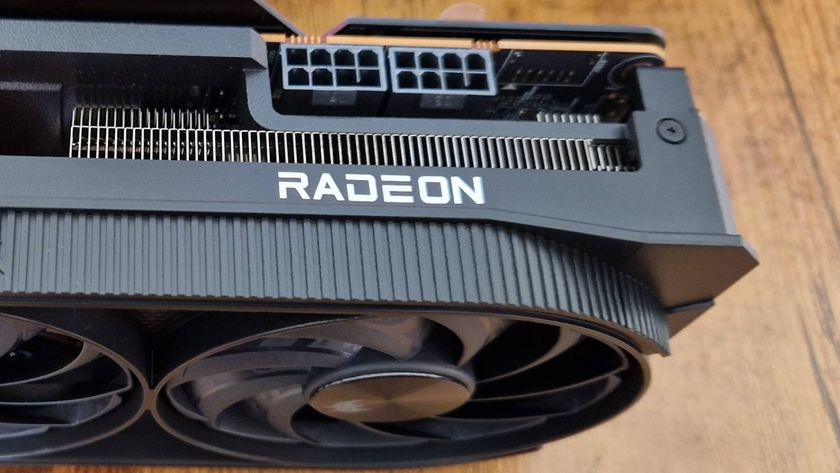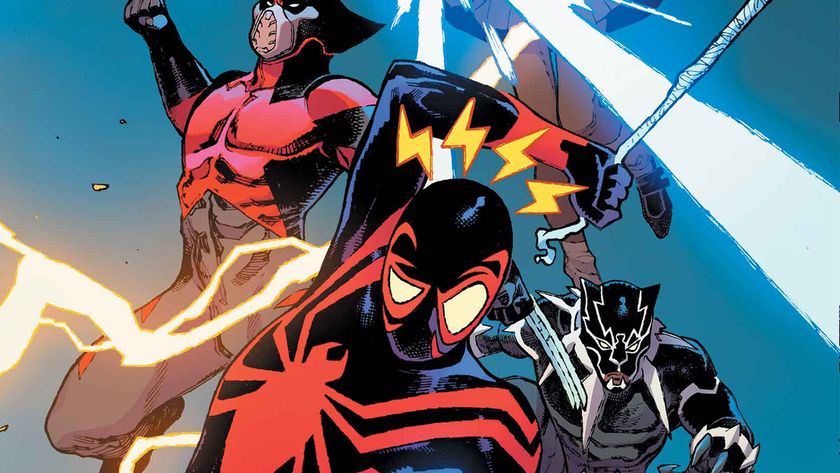Best retro game consoles 2025: my favorite ways to play classic capers
Great ways to play retro games using modern tech
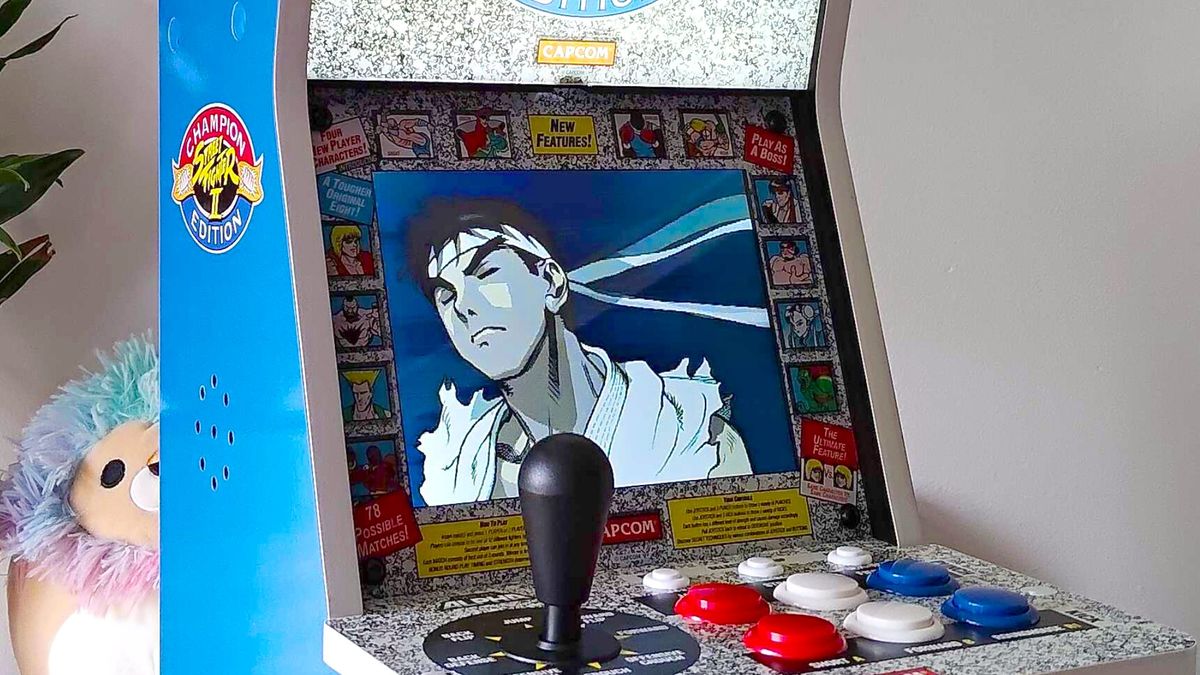
The best retro consoles in 2025 come in various shapes and forms, and there are plenty of modern ways to play your old favorites. From replica arcade machines with authentic artwork and controls to pocket-sized homages to the OG PlayStation, Nintendo Entertainment System, and Sega Genesis, it's never been easier to revisit gaming history.
I started playing games in 1994, and I've kept all the best retro consoles since then. While I love my collection, I also think it's important to experiment with new devices that can perform the same tricks, as not everyone can afford original systems and physical games. That's why new devices like the Evercade and hardware recreations like the Atari 2600+ are well worth considering in 2025, as they ultimately make playing oldies more approachable.
Lately, I've been messing around with the Quarter Arcades Taito Bubble Bobble - an incredibly small arcade cabinet with plenty of authentic details. I fully believe machines like this are going to be huge in 2025, but I'm also excited to see new emulation devices and potentially some official plug-and-play systems show up too. So, without further ado, here are my best retro console picks for the year so far.
The quick list
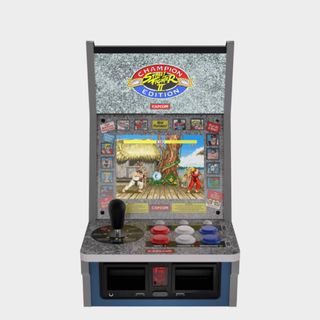
This clever arcade cabinet by Blaze is compatible with a wealth of Evercade cartirdges, features authentic controls, and a gorgeous artwork.
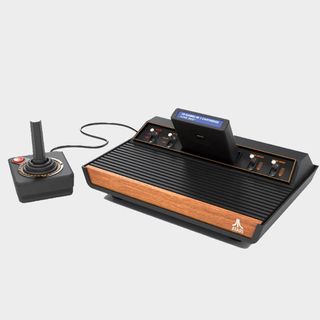
Just like the OG console, the 2600+ is compatible with original controllers and and cartridges, but swaps out old connectors for HDMI.
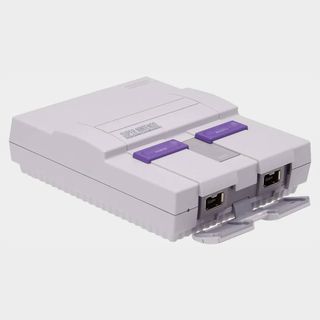
Mimicking the design of Nintendo's iconic 32-bit console, this mini version boasts built in classics, HDMI output, and controllers that feel just like the originals.
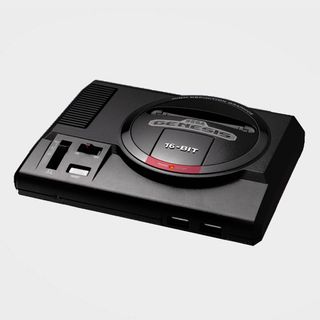
This tiny homage to the Genesis goes the extra mile to replicate Sega's '90s console while providing new USB controllers and HD output.
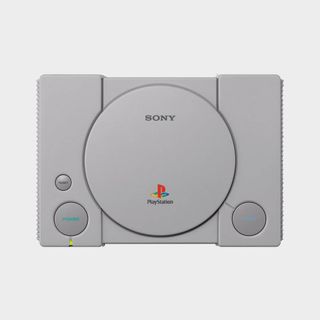
While the PlayStation Classic got off to a rough start, homebrew enthusiasts have turned it into an ideal mini PS1 tribute with modern features.
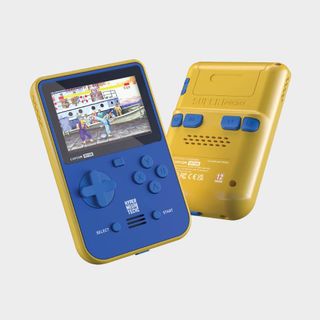
Serving as one of the best modern handhelds period, the Super Pocket boasts is tremendously cheap and has access to a bunch of Evercade cartridges
Load more retro consoles ↓
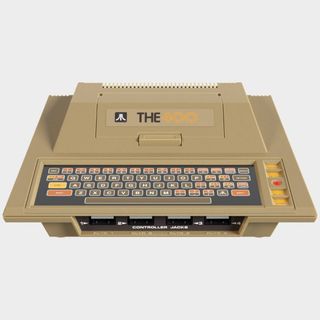
Out of all the tiny microcomputers out there, the Atari 400 Mini serves as the best way to experience the platform's hidden gems.

Phil is a retro gaming expert who has covered old consoles for the BBC and sites like TechRadar in the past. These days, they review all the latest classic recreations, gadgets, and homages to old school hardware using over 30 years of experience. They also have an expansive collection of vintage consoles and a specific drawer for cursed handhelds.
The best retro console for arcade games





Specifications
Reasons to buy
Reasons to avoid
The Evercade Alpha proves that at-home arcade machines don't have to just feature one or two games. In fact, Blaze's bartop system is actually a platform in itself, providing access to over 500 releases using cartridges.
At its core, the Alpha is an authentic arcade experience that comes armed with excellent button and stick microswitches paired with a sharp LCD display. Despite using modern tech, this Evercade machine manages to feel just as authentic as the real deal, even though it's much smaller than the original cabinet. Plus, you'll have plenty of modern connivences at your fingertips like wide USB controller support, punchy speakers, and effects that can make the screen feel like an old CRT.
Naturally, Evercade cartridge support is a huge selling point since you'll have access to over 500 games. That's pretty remarkable considering alternative machines are usually limited to just a few themed classics, but you can technically even play 3D outings like Tomb Raider and Legacy of Kain: Soul Reaver on this bad boy alongside countless retro capers.
If you're into authentic retro gadgets, the Alpha is absolutely going to win you over with its detailed art, light-up marquee, and smaller touches like light up coin slots. There's plenty of detail to be found with this cabinet that emulates the look of an actual system from back in the day, making for both an excellent way to play arcade romps and a collector's piece for your game room.
Evercade emulation has proven itself time and time again to be robust, and the same applies to the Alpha's abilities. Every game I've tested runs at full speed with no hiccups, and the LCD screen provides vibrant visuals that don't spoil the retro aesthetic. The integrated controls are spot on too, with responsive clicky switches holding up against the best arcade controls in the business. Load times can be slightly slower than alternative means, but it's not noticeable enough to be a proper gripe.
By way of cartridges, the Evercade Alpha has solved one of the at-home arcade scene's biggest issues - game selection. This cabinet is pretty much a platform in its own right, and while it's missing HDMI output to make it a true living room solution, it's still a fantastic piece of kit that represents an arcade gaming gold standard.
Read more: Evercade Alpha review
The best retro console for Atari games





Specifications
Reasons to buy
Reasons to avoid
Plenty of alternatives have arrived in the past, but the Atari 2600+ is one of the most authentic modern ways to play the system's back catalogue. It is effectively a smaller version of the OG system that runs the original cartridges, but trades that old RF cable for HDMI out.
One of the caveats to sticking with the original console's design is that for the most part, the Atari 2600+ doesn't boast many modern features. Instead, it runs cartridges just like the '70s system, with all the difficulty and stage options being changeable via four switches on top. That makes for a super authentic way to play your old collection using a modern gaming TV, but connivences like save states and visual effects are missed.
Rather than picking up the 2600+ features, you should do so based on its extremely authentic design. This console homage is pretty much an original Atari 2600 save for its HDMI port and illuminated front logo. Its beautiful woodgrain front panel and top ridges are just as iconic as the games it runs, and if you don't have the OG system, this one will serve the exact same purpose in your retro collection.
I played a whole bunch of original games using the Atari 2600+, and while it's technically using emulation to achieve its goal, the results are pretty flawless. Sure, most modern toasters could probably run classics like Berzerk and Pac-Man, but for what it's worth, you're getting super accurate visuals and sound here with an HD resolution. The included joysticks and paddles also hold up compared to the originals, and if you happen to have other 9-pin retro gamepads lying around, those will work too.
Ultimately, the Atari 2600+ is for players looking for as authentic of an experience you can get while still using a modern screen. It would have been nice to have some modern perks like save states or effects, but many will argue that would defeat the point of this tribute system.
As a side note, there's now an Atari 7800+ that looks like the company's '80s system while boasting the same functionality. It's worth checking out if you either prefer the look of the NES competitor or find the idea of wireless gamepads appealing. However, it is almost the same device, so it's really just a case of choosing between styles.
Read more: Atari 2600+ review
The best retro console for Nintendo games



3. Super NES Classic
Specifications
Reasons to buy
Reasons to avoid
With the success of and overwhelming demand for the NES Mini Classic, a 16-bit follow up was virtually guaranteed. And here we are - once again, Nintendo has knocked it out of the park by providing a library of essential games inside a faithful, adorable replica of the original SNES.
Besides being hugely nostalgic, these games represent some of the era's best; they're classics that changed the industry in fundamental ways. Whether it's Super Mario World or Street Fighter 2, these are games that inspired generations. They aren't museum pieces, either. The likes of Yoshi's Island, The Legend of Zelda: A Link to the Past, and Super Punch-Out! are still as engaging today as they were in the heyday of the SNES.
They're displayed at their very best here thanks to a suite of display options. These range from fuzzy CRT emulation to crisp HD output, rewind and suspend options, and a bucketful of the kind of fun Nintendo Easter eggs you'd expect from one of the best retro game consoles available. Even though the issue of controller cord length persists - it’s longer, but still nowhere near long enough for living room setups - it’s hard to imagine a more slickly packaged, densely concentrated dose of retro goodness.
That's true no matter which side of the Atlantic you're on. While US readers get the North American model with its sleek purple accents, UK fans are able to revisit their unique version with primary-colored buttons on the joypad. Perfection.
Play these first: Super Mario World | The Legend of Zelda: A Link to the Past | Super Metroid | Yoshi's Island | Secret of Mana | Earthbound
Read more: SNES Mini hands-on
The best retro console for Sega Genesis/Mega Drive games



4. SEGA Genesis / Mega Drive Mini
Specifications
Reasons to buy
Reasons to avoid
If you're a SEGA fan from a time when Sonic had just arrived and the Biker Mice From Mars were still a thing on TV, you're in luck - the SEGA Genesis Mini (or Mega Drive if you're in the UK) is the best retro game console for you. From an adorably dinky console with a cartridge slot you can actually open for 'blowing away dust' to its authentic packaging, this is a system that excels at the little things. It even has original menu music by the 16-bit era legend Yuzo Koshiro, created using authentic tools of the day.
Then there's bang-for-buck. Thanks to 42 all-time classic games (and bios on the significance of each one), the Genesis Mini offers better value for money than most. It's an excellently handled throwback to another time that'll hit you right in the nostalgic feels.
Play these first: Sonic The Hedgehog | Gunstar Heroes | Streets of Rage 2 | Mega Man: The Wily Wars | Castlevania: Bloodlines | Contra: Hard Corps
Read more: SEGA Genesis Mini review
The best retro console for PlayStation games




Specifications
Reasons to buy
Reasons to avoid
The PlayStation Classic was, to put it bluntly, a bit of a disappointment when it was first released. However, I've really warmed up to the mini PS1 in 2025 thanks to efforts by the modding community, as you can now play most games from Sony's back catalog and use a variety of USB controllers.
If nothing else, the PlayStation Classic is one of the best-looking mini plug-and-play consoles to release during the 2010s. It's effectively a replica that's 45% smaller than the OG system, but still boasts all the same details. From molded memory card slots to even the little slot on the back that'd accommodate your Action Replay adapter, the device plays complete visual homage to an iconic piece of '90s hardware.
Even before you get to modding, the PlayStation Classic has some nice features to hand. You'll be able to use save-state slots in any game you choose to play, and there are even functions for swapping disks, which is incredibly handy for RPGs like Final Fantasy 7. On the hardware side of things, you'll benefit from a straight HDMI output from the console to your TV, delivering 720p visuals that help oldies look crisp compared to the originals.
The PlayStation Classic's built-in selection of games is a bit of a letdown, not to mention Sony shipped the console with PAL versions. That means they technically run slower since TVs in the region used to exclusively use 50Hz, and the world has since moved on from refresh rates below 60Hz.
Thankfully, there is a way to remedy this, as I recently modded my PS1 mini to unlock its true potential. Using custom firmware like Project Eris will let you run your own ROM backups on the device, use other USB controllers, and even emulate other systems if that's up your street. If you really don't like tinkering, you'll still be able to play outings like Grand Theft Auto, Metal Gear Solid, and Resident Evil using the stock software, but I know many of you will want to look into the mod just to play Crash and Spyro alone.
Technically, the PlayStation Classic is discontinued, but there's still an abundance of refurbished and second-hand stock at various retailers. Pair that with its new found modded abilities, and that's precisely why I still think it's the best modern way to play PS1 games, even if there are emulation devices that can pull off similar moves.
Read more: PlayStation Classic review
The best retro gaming handheld





Specifications
Reasons to buy
Reasons to avoid
The Super Pocket is one of the most affordable retro consoles out there, and it just so happens to also be a fantastic handheld. Not only does it have access to a wealth of Evercade cartridges, but it also comes in Capcom, Taito, Atari, and Technos flavors that boast built-in games. Not too shabby for under $60!
Just like many other retro gaming handhelds out there, the Super Pocket takes queues from the Game Boy while wearing a look of its own. Rather than using a horizontal layout like it's Evercade siblings, this portable instead features a 2.8-inch IPS with a 4:3 aspect ratio, meaning it's more suited to NES, SNES, and Genesis classics. However, it's got a cheeky set of shoulder buttons round back, so there's nothing stopping you even playing PS1 romps like Tomb Raider and Legacy of Kain: Soul Reaver.
Compared to other Evercade devices, the Super Pocket is a little more bare bones. You'll be missing out on comforts like video output and a wider screen, but its simplicity makes it arguably more approachable. You'll still be able to mess around with visual settings like scanlines, shaders, and aspect ratios if those are your style, and you won't be stuck for ways to hear excellent chiptunes thanks to its 3.5mm headphone jack and built-in speakers. But, Blaze has otherwise created a handhel made for straight talking retro gaming that's free from updates, downloads, and general online shenanigans.
At this point, the Evercade's emulation performance has proven itself to be soild, and the same extends to the Super Pocket. Thanks to each cart having the emulators required baked in alongside the ROMs, you won't have to think about if you're using the right settings or hardware. Everything will simply run at full speed with the right sound, and the handheld's IPS screen does a great job helping pixels pop.
It's also worth pointing out that the Super Pocket's battery life is exceptional. I keep one in my travel bag for when my Steam Deck OLED has ran out of juice, and if I haven't used it in a while, I often find it's still ready to go. In straight up sessions, it'll last for about 5 hours too, which isn't bad considering its size.
For the money, the HyperMegaTech! Super Pocket is by far one of the best handhelds for easy retro gaming sessions. If you prefer to tinker with settings and squeeze extra performance out of your old games, you might want to check out emulation alternatives instead. Otherwise, this is a device that both travels well and provides excellent retro functionality at a low price.
Read more: Super Pocket review
The best retro console for microcomputer games






Specifications
Reasons to buy
Reasons to avoid
Out of all the tiny microcomputer options out there, I'd argue the Atari 400 Mini (THE400 Mini) has the most to offer. Sure, if you have specific memories tied to something more popular like the C64 or ZX Spectrum, you'll want to look at options with those specific ports. But, if it's a general taste for that era of gaming you're after, this miniature replica more than has you covered.
It's safe to say that out of all the microcomputers, the Atari 400 is the one I see least. Therefore, being able to pick up a tiny version that features all the same design elements shrunken down into a plug and play is pretty appealing, and the level of detail that Retro Games Ltd has put into this mini console is remarkable. You won't be able to actually use is sculpted membrane keyboard or use actual cartridges, but it's still going to more than give you a reference for that the real deal looked like
Looks aside, the Atari 400 Mini also has a bunch of modern comforts at its disposal that'll help you easily play a bunch of microcomputer classics using HDMI output. If you don't want to faff around with ROM backups, you'll be able to enjoy 25 built-in classics from the platform. However, it'll also happily run your own collection and even Atari 2600 games using its USB ports, which just so happen to support a bunch of different gamepads too.
On the software side of things, you'll have access to save states and a 30-second rewind mode, which may help you finally beat tricky games from 40 years ago. If you want to keep things ultra authentic, you can even boot into BASIC and do some programming, but you will need to supply your own keyboard.
I've tested the Atari 400 Mini side by side with an original Atari 600XL, and the tiny console nails 8-bit emulation. I played a variety of capers including more obscure backups from my own library, and I wasn't able to sniff out any compatibility issues or visual quirks. The results are so accurate that I now reach for THE400 Mini to play outings like Caverns of Mars, Mountain King, and Turmoil rather than setup one of my OG microcomputers - probably the highest compliment I can give it.
If there's one thing I wish the Atari 400 Mini featured more of, it's probably physical features. Being able to interact more with things like the top cartridge bay or even use the membrane keyboard in some sort of way would have made it the perfect time capsule. That said, this is still one of the most authentic ways to play microcomputer games without the original hardware, and it's worth investing in as a piece of reference hardware.
Read more: THE400 Mini review
If you're shopping for someone in particular, check out our guide to the best gifts for gamers.
Sign up to the 12DOVE Newsletter
Weekly digests, tales from the communities you love, and more

I’ve been messing around with PCs, video game consoles, and tech since before I could speak. Don’t get me wrong, I kickstarted my relationship with technology by jamming a Hot Wheels double-decker bus into my parent’s VCR, but we all have to start somewhere. I even somehow managed to become a walking, talking buyer’s guide at my teenage supermarket job, which helped me accept my career fate. So, rather than try to realise my musician dreams, or see out my University degree, I started running my own retro pop culture site and writing about video games and tech for the likes of TechRadar, The Daily Star, and the BBC before eventually ending up with a job covering graphics card shenanigans at PCGamesN. Now, I’m your friendly neighbourhood Hardware Editor at GamesRadar, and it’s my job to make sure you can kick butt in all your favourite games using the best gaming hardware, whether you’re a sucker for handhelds like the Steam Deck and Nintendo Switch or a hardcore gaming PC enthusiast.
Most Popular





